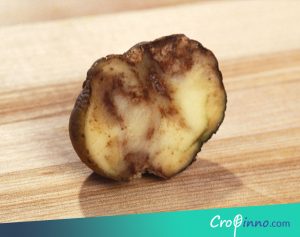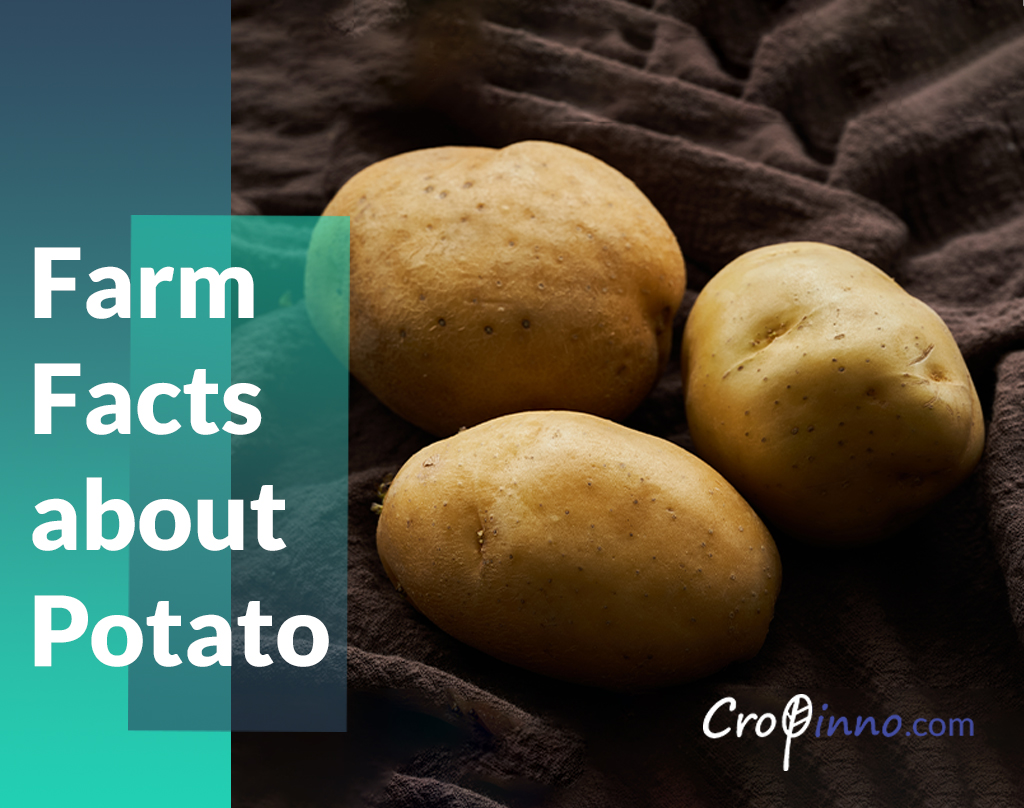The potato is the fourth most important and crucial non-cereal crop, only after rice, corn, and wheat, which makes the world’s main food supply. The water content of the starchy vegetable is estimated to be around 80%, and a long, cool season is the optimal situation for its growth. Native potatoes (most of which are found in the Andes, South America) come in more than 4,000 different types, actually this diversity is one of the most interesting facts about potato. They come in a variety of sizes and shapes. Although they are mostly too bitter to eat, but their biodiversity includes built-in defenses against pests, illnesses, and environmental factors. The world’s potato supply will be guaranteed for many years to come if as many different varieties of potatoes as possible are protected genetically, both in the lab and on the farm.
In developing countries, the area dedicated to potato cultivation has grown more quickly than any other crop since the early 1960s. Now, developing countries produce more than half of the world’s potatoes. The potato It is a key component of the food security for millions of people in Asia, Central Asia, Africa, and South America.
Canadian Potato Production in 2021
Canadian growers harvested a record potato crop last year, with production increasing 18.2% year over year to 123.1 million hundredweight due to increases in both sown area and yield. Weather conditions in most sections of the country were favorable throughout the harvest season, allowing Canadian farmers to harvest the greater part (98.9%) of the total seeded area. Harvested area increased 7.4% to 381,912 acres in 2020, matching the increase in planted area.

By area, Canada’s potato production is distributed in Atlantic Canada (39.9%), Central Canada (22.2%), and Western Canada (37.9%). 65% of Canadian-grown potatoes are processed (frozen French fries, potato chips, flakes and other dried items such as starch, etc.), 21% are fresh table use, and 14% are used for seed.
It is time to learn some interesting facts about this all-time favorite food product for many of us:
Farm Facts about Potato
- Potatoes are the world’s fourth most important food crop, beside rice, wheat, and maize. Consumed by over a billion people globally, the global crop output of potato reaches 300 million metric tons. Potatoes are also Canada’s most valued vegetable crop. Canada is one of the top 20 countries in potato production.
- The potato (Solanum tuberosum) is a flowering plant in the nightshade family. Nightshades include potatoes, tomatoes, peppers, and eggplants. Many of these food crops are high in nutrients and are staple meals in different cultures. Potato is originated and was initially cultivated in South America’s Andes Mountains.
- Growers can grow potatoes from sea level up to 4,700 meters above sea level; from southern Chile to Greenland. They are produced in over 100 countries around the world.
- One hectare of potato may produce two to four times the amount of food that grain crops do. Potatoes need up to 7x more water than cereals and generate more food per unit of water than any other major crop. Today, they are produced in over 100 countries around the world.

5. Among all facts about potato, this one might be the most interesting and least-known: Potato was the first vegetable cultivated in space. in October 1995, Potato plants were sent into space aboard the space shuttle Columbia. NASA and the University of Wisconsin, Madison developed the technology to feed astronauts on extended space journeys and, potentially, to feed future space colonies.
6. The Great Famine, also known as the Irish Potato Famine or the Great Irish Famine, was a historical event with consequences that went way beyond agriculture. It happened in Ireland between 1845 and 1849 when the potato harvest failed in successive years. Late blight, a disease that kills both the leaves and the edible roots, or tubers, of the potato plant, was to blame for the crop failures. Hunger and famine were inevitable since over three million Irish people (more than a third of the population) were completely dependent on potatoes as their staple food.

7. Potatoes can be reproduced through vegetative propagation, which means that a new plant may be grown from a potato or a piece of potato known as a “seed.” The young plant has the potential to generate 5-20 new tubers that are genetic clones of the mother seed plant. Potato plants also produce flowers and berries, which contain between 100-400 botanical seeds. These can be planted to generate new tubers that are genetically different from the mother plant.
8. According to the Guinness Book of World Records, the world’s largest potato weighed 18 pounds, 4 ounces. A potato of that size is enough to prepare 73 medium fries at McDonald’s!

